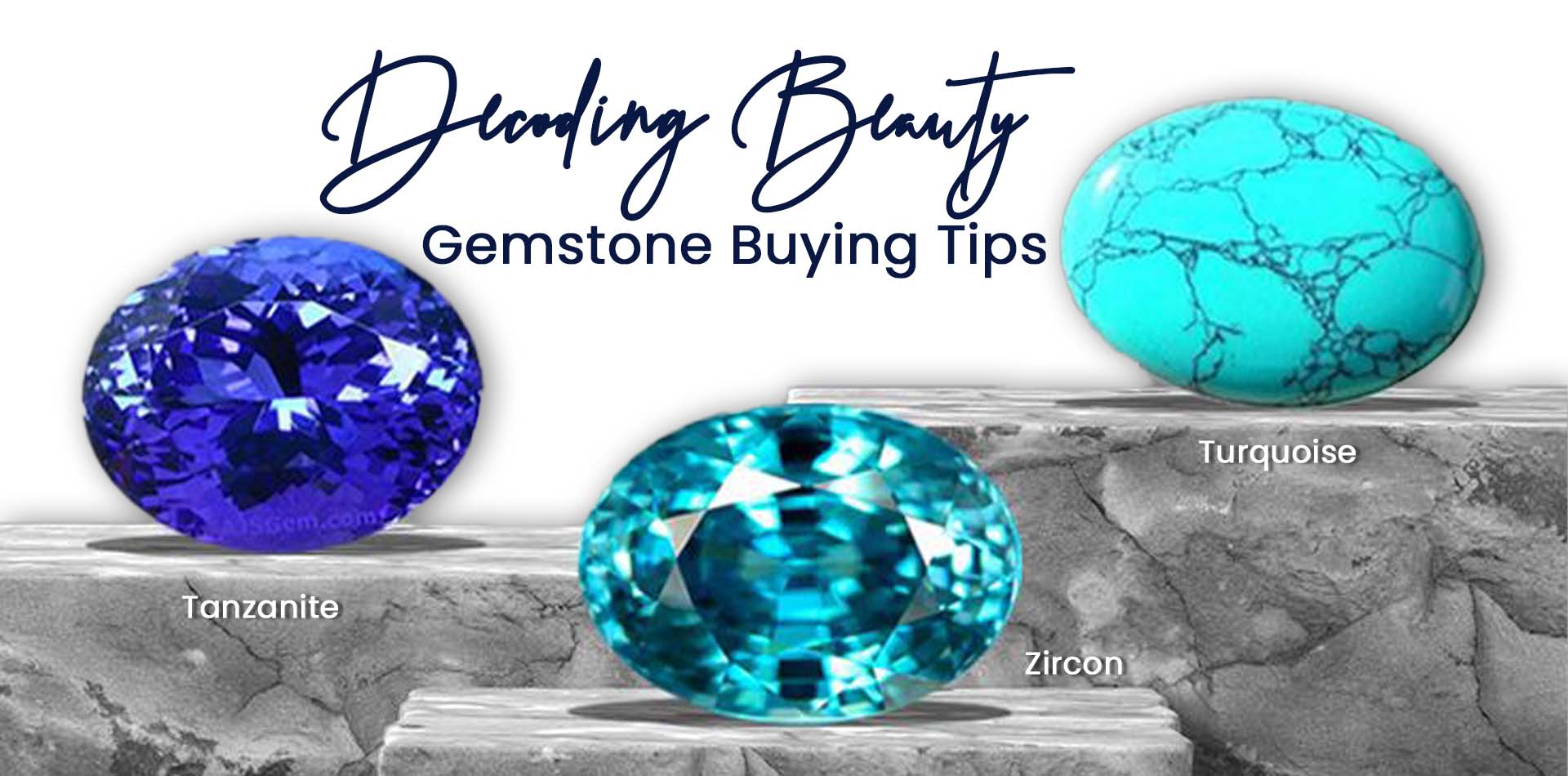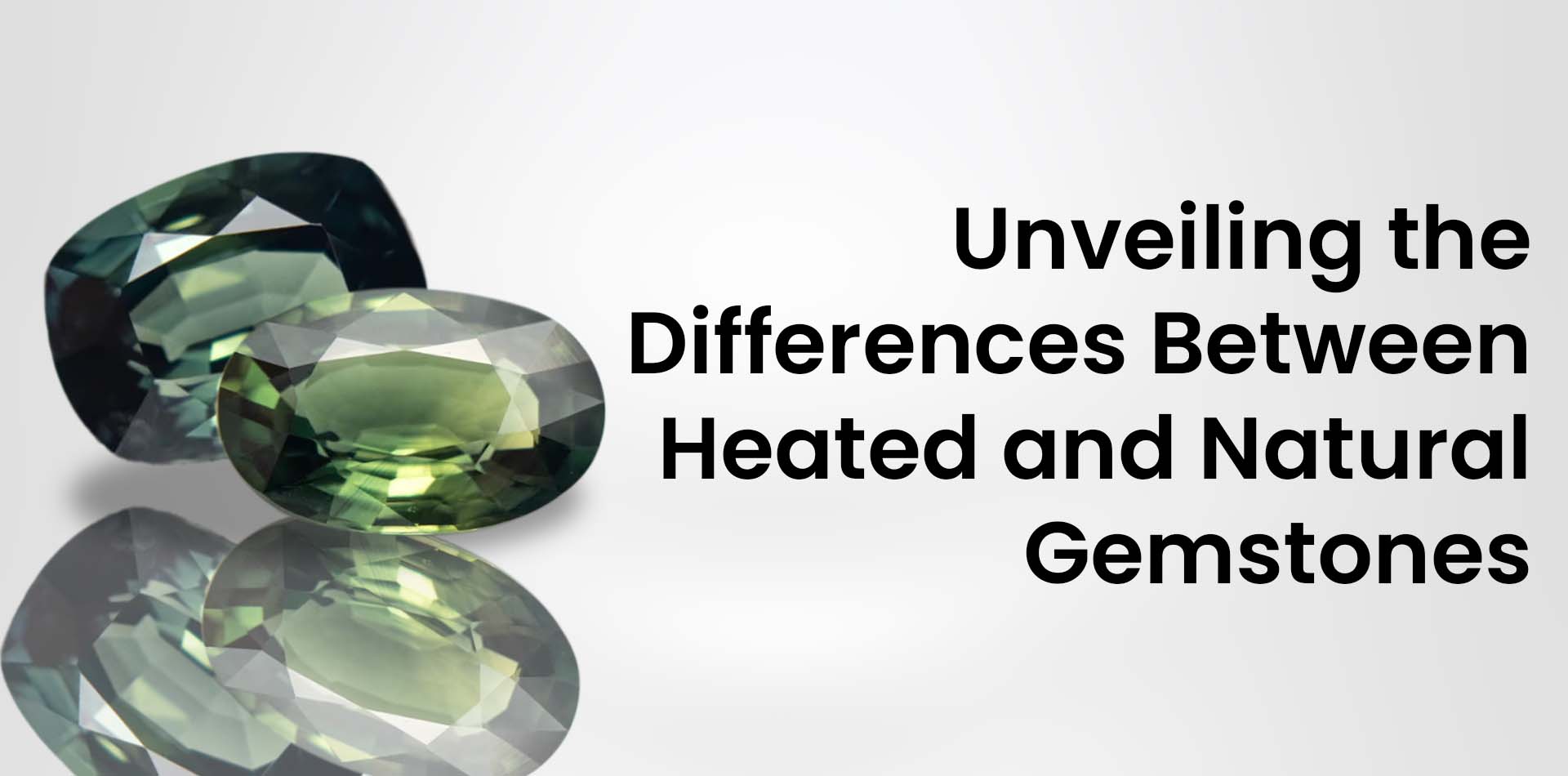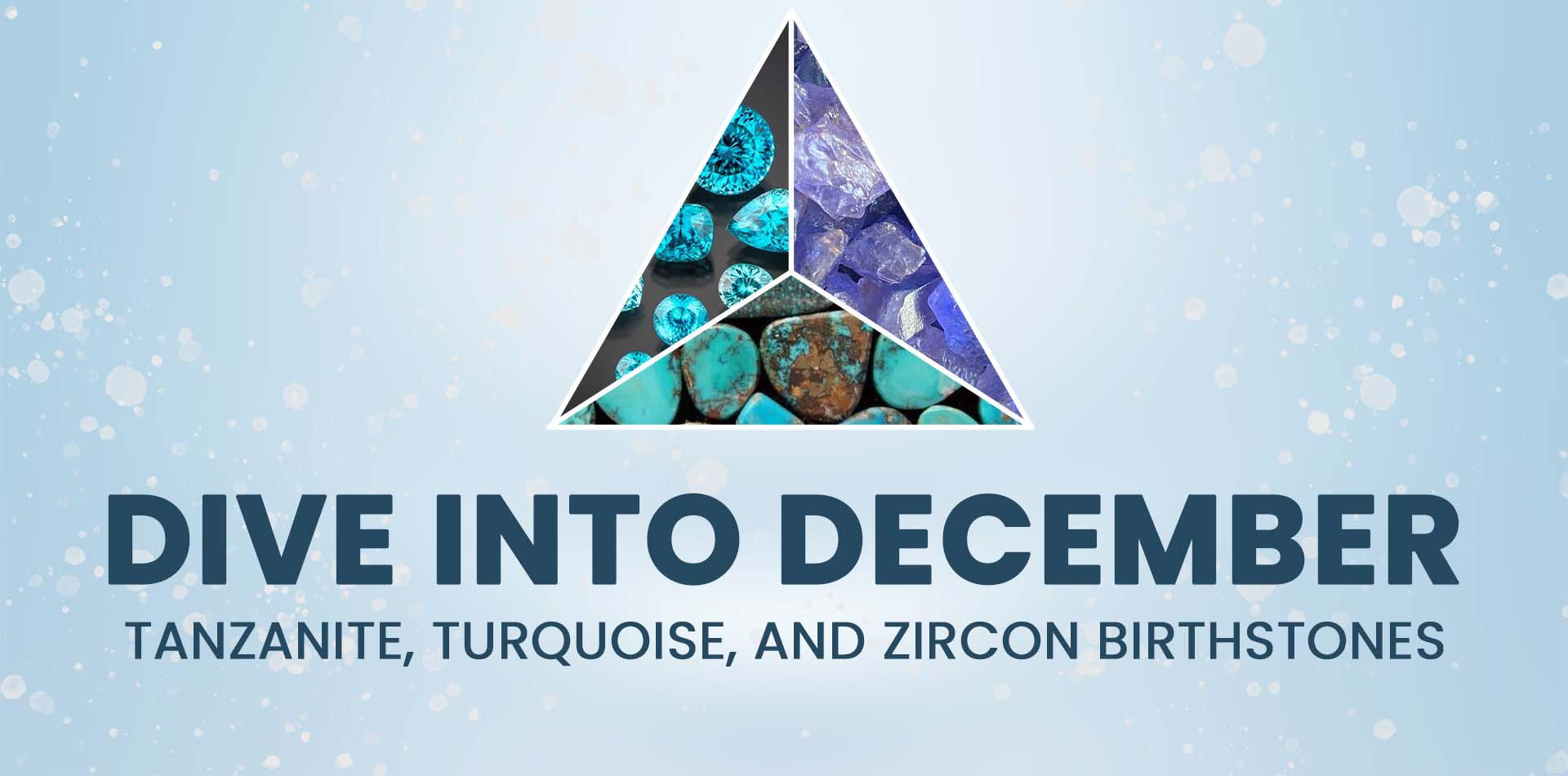Gemstones have enthralled people's hearts for ages due to their mysterious and symbolic meaning in addition to their stunning beauty. Tanzanite, turquoise, and zircon are three gemstones that stand out from the crowd because of their distinctive hues and characteristics.
Knowing the subtle differences between these jewels can improve your purchasing experience, regardless of your level of knowledge with gemstones. We will explore the realms of Tanzanite, Turquoise, and Zircon in this post, offering insightful analysis and helpful hints to help you choose wisely when incorporating these priceless gems into your collection.
Tanzanite is a captivating gemstone that has shades of violet and blue that are striking. Here are tanzanite buying tips that you should take into account to make sure you make a wise and fulfilling investment:
- Colors: The colors deep blue to violet-blue are the most sought-after Tanzanite hues in terms of intensity and saturation. Seek for stones with a deep, rich color and high saturation. Stones with gray or brown hues should be avoided since they can take away from the gem's overall attractiveness.
- Pleochroism: Tanzanite exhibits pleochroism, which is the ability to show distinct colors depending on the angle at which it is seen. A Tanzanite of superior quality will have intense trichroism, displaying burgundy, violet, and blue tones. Examine the gem from different perspectives to really enjoy the play of color.
- Clarity: There are many inclusions in tanzanite, and it is uncommon to find a stone that is faultless. Be selective, though, regarding how visible inclusions are. In general, minor imperfections are acceptable as long as they don't adversely damage the gem's durability or beauty.
- Cut: A Tanzanite with a perfect cut enhances its color and sparkle. Seek out facets with symmetry that let the gem's inherent beauty come to light. The cut's proportions should be carefully considered since they can affect the gem's overall beauty.
- Carat Weight: Tanzanites come in a range of sizes, and the cost of a stone can rise dramatically as the carat weight increases. When selecting the stone's size, take your spending limit and personal tastes into account.

With its unique blue-green color, turquoise is a well-liked gemstone with a lengthy history. It's important to take a few things into account when purchasing turquoise to make sure you get a real, fine gemstone. But how to identify genuine turquoise? Here are some tips as per the Turquoise gemstone guide:
- Matrix and Color: True Color: True turquoise has a range of blue and green tones. Overly colorful or uniformly colored stones should be avoided as they may have been treated or dyed.
- Matrix Patterns: The inclusion of additional minerals typically results in a matrix or veining pattern seen in genuine turquoise. Accept the unusual designs, but use caution if the stone lacks veining or if the matrix looks artificial.
- Hardness: Compared to other gemstones, turquoise is comparatively softer, with a Mohs hardness of five to six. Take care not to subject your turquoise to strong chemicals, intense heat, or direct sunshine as these conditions may cause damage, discoloration, or a shift in texture.
- Treatment: In order to stabilize the stone or intensify the color, many turquoise gemstones go through treatments. Even though stabilization is widely acknowledged, it's critical to ascertain whether the stone has undergone treatment. At the time of purchase, all treatments are fully disclosed.

Zircon
Zircon is a fiery-brilliant gemstone that occurs naturally. It comes in a range of colors and is sometimes confused with cubic zirconia. It's important to be aware of a few things before making a Zircon purchase to make sure you get a high-quality gemstone. Here are some vital pointers for purchasing Zircon:
- Color Quality: Brilliant Colors: Zircon comes in a variety of hues, the most common being blue and white. In particular, blue zircon is highly valued. Seek for stones with colors that are rich and vivid. Steer clear of extremely dark or dull stones since they might not have the appropriate shine.
- Clarity: Zircon's bright shine can be attributed to its high refractive index. For maximum brilliance, choose stones with few inclusions and good transparency. Although some imperfections are acceptable, severe faults could detract from the gem's overall attractiveness.
- Cut: A clean cut zircon brings out its inherent brightness. Seek for stones with symmetrical facets for efficient light reflection and refraction. When assessing the cut, take into account the special qualities of the stone as ideal cuts can differ depending on the particular hue of the zircon.
- Size: Zircons come in a range of sizes, and the carat weight of the stone determines how much it costs. As per the Zircon gemstone price factors, when choosing the stone's size, take your spending limit and personal tastes into account. Remember that greater rates might be demanded for larger zircons with superior color and clarity.

Conclusion
It is essential to comprehend the distinct features and attributes of Tanzanite, Turquoise, and Zircon while making a purchase. These gemstones offer a world of beauty just waiting to be discovered, whether you're drawn to the deep blues of Tanzanite, the cultural significance of Turquoise, or the glittering brightness of Zircon. By using these purchasing guidelines, you can choose gemstones with confidence that complement your aesthetic tastes and become priceless additions to your collection over time.












